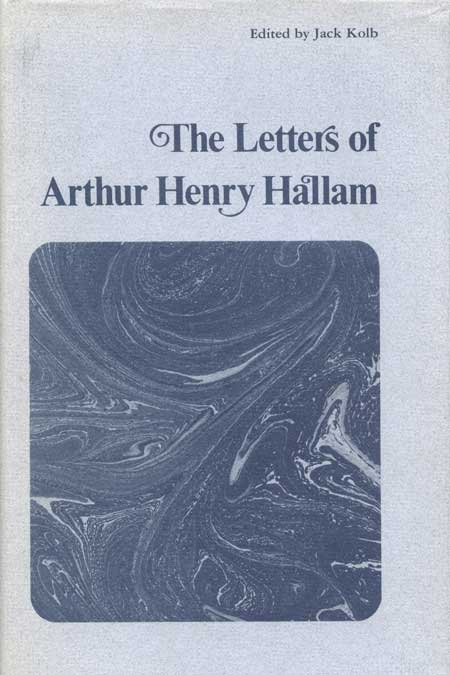| click here to read the full text of the book | leave / read comments and critiques of the book |

The Letters of Arthur Henry Hallam
Edited by Jack Kolb
Hallam is best remembered as the subject of what is, certainly, the most personal, and one of the most moving, elegies in English literature, Alfred Lord Tennyson’s In Memoriam—a poem that commemorates and celebrates the estimable qualities of a gifted young man who died prematurely in 1833, at age twenty-two, while traveling with his father in Europe, and whose personality and character, ironically enough, were to be persistently and increasingly obscured and distorted in the century following his death by the peculiar circumstances in which his literary “remains” were first published, and by the injudicious expurgations made by Hallam Tennyson in the account of the Hallam-Tennyson relationship in the memoir he wrote of his father.
In this scholarly edition of all known surviving letters and fragments by and to Hallam, we are able to see for the first time, and to see whole and plain, the golden boy who occupied so important a place both in the affection and admiration of his friends and at the center of the famous coterie of “Cambridge Apostles”—a group that, to be sure, was in part a mutual admiration society, but one that also epitomized the literary, intellectual, and political interests and aspirations of the generation that, about 1830, was beginning to come into its own.
Hallam, the son of the eminent historian Henry Hallam, was born in 1811, and was the author of a volume of creditable poetry and of numerous essays and reviews. His letters chronicle his schooling at Eton and Cambridge, a romantic season spent in Italy, a spiritual crisis, the course of his friendship with Tennyson, his engagement to Emily Tennyson, his apprenticeship in a law office, and a burgeoning career as a journalist. They provide, in addition, revealing and important information, otherwise unobtainable, on the early lives and opinions of Hallam’s friends, many of who rose to positions of considerable prominence and influence in Victorian life and society. We are brought into close contact, for example, with the whole Tennyson family during those difficult years when a great poet was emerging fro a desperately unhappy domestic milieu in the rectory at Somersby in the wilds and wolds of Lincolnshire. And we encounter in the letters to and from Gladstone the political acumen that was to result eventually in his election four times as prime minister of England—Gladstone, who was to adore Hallam throughout his whole life, and who said of his letters that they recount “ the history of his mind . . . so remarkable as composed of a series of the most keen and thrilling emotions” and with a “power and habit of setting it forth . . . not less conspicuous.”
Hallam’s correspondence represented a serious (in all the Victorian senses of the word) preoccupation throughout the whole of his short life. Letters were the sustenance, sometimes the very embodiment, of the relationship crucial to him. Indeed, separated as he and Emily Tennyson were during most of their engagement, their letters were their relationship. To both his fiancée and his friends, Hallam was to testify repeatedly and warmly to the emotional restoration, the recovery of spirits, that their letters brought—letters that came like “the gentle touch of the renovating diurnal light” to “one long imprisoned in darkness.”
Professor Kolb provides extensive annotation for the benefit of the general scholar as well as the specialist. His edition will prove useful to the historian as well as to the literary critic, for it incorporates a substantial number of extracts from the correspondence of Hallam’s contemporaries. More than two-thirds of the material it prints has not heretofore been published in any form, and many of the published texts it reprints are virtually inaccessible today.
Jack Kolb is professor of English at the University of California, Los Angeles.
| 1981 841 pp. | This title is no longer available in a traditional print edition. Click here for free access to the book’s full text. |

